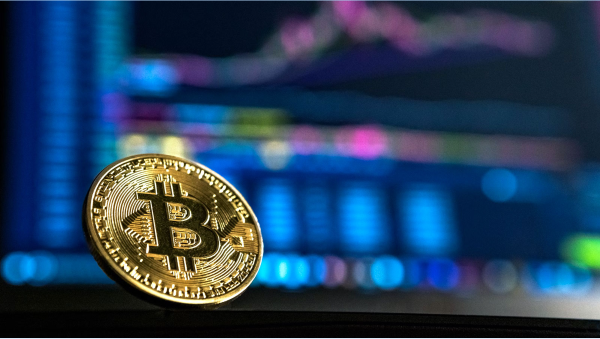ICE is one of the largest groups of exchanges under a single umbrella that allows traders and investors to access a spectrum of financial products. It spans exchanges in countries such as the U.S., Singapore, Canada, U.K., the Netherlands and the UAE.
As one of the group exchanges, ICE Futures Singapore, launched its first contract and initiated trade in 2015. Over the years, the list has grown to include products such as energy, currencies, commodities, equity indices, and digital crypto assets like Bitcoin.
ICE Futures Singapore has products that are tailored for the Asian market that extend beyond trading Asian hours. To expand on trade opportunities, in May 2022 Orient Futures Singapore collaborated with ICE Futures Singapore to expand its presence and access to major exchanges globally.
6 Things You Must Know About ICE Futures Singapore
1. History of ICE Futures Singapore
ICE Futures Singapore was set up in 2015 to help traders during Asian hours access global benchmarks across digital assets, FX, equity index and energy contracts.
In addition to offering a wide range of products to hedge against different types of risk, ICE Futures Singapore also provides mini-futures contracts that allow traders and smaller firms better exposure to the financial markets.
ICE Futures Singapore provides regulated futures trading tailored for Asia which includes customised equity derivative futures, energy futures, and popular Forex pairs commonly traded in Singapore, China, and Asia.
This offers traders in Asia access to highly specific products to take advantage of directional or arbitrage trading opportunities – all right here at home in Singapore.

2. Access & Trade Digital Assets
If you are interested in trading cryptocurrencies using futures contracts, then ICE Futures Singapore will allow you access to trade Bitcoin futures. The Bakkt ® Bitcoin (USD) Cash Settled Monthly Futures is a cash-settled monthly future for Bitcoin.
The contract is in denominations of 1 Bitcoin.
ICE Futures Singapore Bakkt Bitcoin Monthly Futures Contract Specifications
The Bakkt Bitcoin Monthly Futures Contract has the following specifications:
The contract size for the Bakkt Bitcoin Futures Contract is 1 Bitcoin, with a minimum price fluctuation of $2.50 per bitcoin /contract, and a minimum block trade of 10 lots.
The last trading day of the contract month is 2:30 PM Eastern Prevailing Time (EPT) on the same day on which the equivalent IFUS Bakkt Bitcoin(USD) Monthly Futures Contract expires.
Contract months are up to 12 consecutive contract months.
Trading Hours are from Monday to Friday, at these trading hours:
9:00 am – 07:00 am (Singapore time SGT)
Bakkt Bitcoin Contract Symbol: BMC
Disclaimer: To retail investors: Futures contracts based on Bitcoin may pose specific risks. Such risks may arise from greater volatility in prices resulting from a range of factors. Those risks could in turn affect financial outcomes associated with maintaining required margins or any losses at the final contract settlement. You should carefully consider whether such trading is appropriate for you in light of your risk tolerance and financial ability
3. Trade Across Forex Contracts
When it comes to Forex trading, ICE Futures Singapore provides a spectrum of futures contracts that allows you access to trade unique currency pairs.
These include trading currencies such as Mini USD/SGD, USD/SGD(Full-Size), Mini USD/CNH, Mini CNY/USD, Mini HKD/USD, Mini TWD/USD, Mini KRW/USD, Mini THB/USD, Mini PHP/USD, Mini MYR/USD, Mini IDR/USD.
In addition, traders can gain exposure to U.S. Dollar Index Futures through Mini U.S. Dollar Index Futures, allowing investors to speculate and hedge their currency positions based on the strength of the dollar against a basket of currencies.
4. Trade Energy Contracts
Energy traders in Singapore, Asia and beyond, can now access crude oil futures through ICE Futures Singapore.
ICE Futures Singapore offers mini–Brent Crude Futures. Brent is ICE’S flagship contract, and the mini futures allow traders to access opportunities via a contract that is 10 times smaller than the main contract size of 1000 barrels per lot. Around 80% of the world’s crude oil production is priced using the Brent mechanism.
Traders can access the Mini Brent Crude Futures (100 BBL), Mini Low Sulphur Gasoil Futures (10mt) and the Mini WTI Crude Futures (100 BBL). This helps them access the entire spectrum of crude futures, allowing for complex trading strategies or broad exposure to energy.

5. Trade Across Equity Derivatives
Through ICE Futures Singapore, traders will be able to access both Asian and international equity indices for better trading opportunities. These include the Micro Asia Tech 30 Index Futures, Micro MSCI Europe Index Futures as well as the Micro MSCI USA Index Futures.
Traders can access standardised futures contracts for European and U.S. equities during Asian trading hours and gain exposure with a minimal upfront deposit and a contract value of just $20,000 (as of October 7, 2021).

6. Unique Features of Trading With ICE
Through ICE Futures Singapore, traders will enjoy zero membership fees, lower margins, zero market data fees, flexibility through micro and mini-sized contracts and a wide range of futures products.
Additionally, traders in Singapore and Asia will be able to trade during ‘Asian’ hours, where markets open from 8 am. (Refer to the full list of time zone and trading hours here).
ICE offers a series of technological solutions such as pricing data and information across commodities, equities, FX and fixed income markets. This includes real-time market data feeds.
Traders can gain unique exposure to cryptocurrency trading, and access to Asian technology stocks across multiple Asian markets all through a single contract.
Access ICE Singapore With Orient Futures Today
At Orient Futures, we provide traders and hedgers with access to the international futures market including the ICE Singapore exchange.
We are a member of ICE Singapore and can grant traders both local and international access to the futures market. With us, you can enjoy direct access to trading, clearing and settlement.
In addition, we are an official MAS regulated broker and an official overseas intermediary, allowing traders to access a spectrum of futures and options in Chinese exchanges including the INE, DCE and ZCE.




